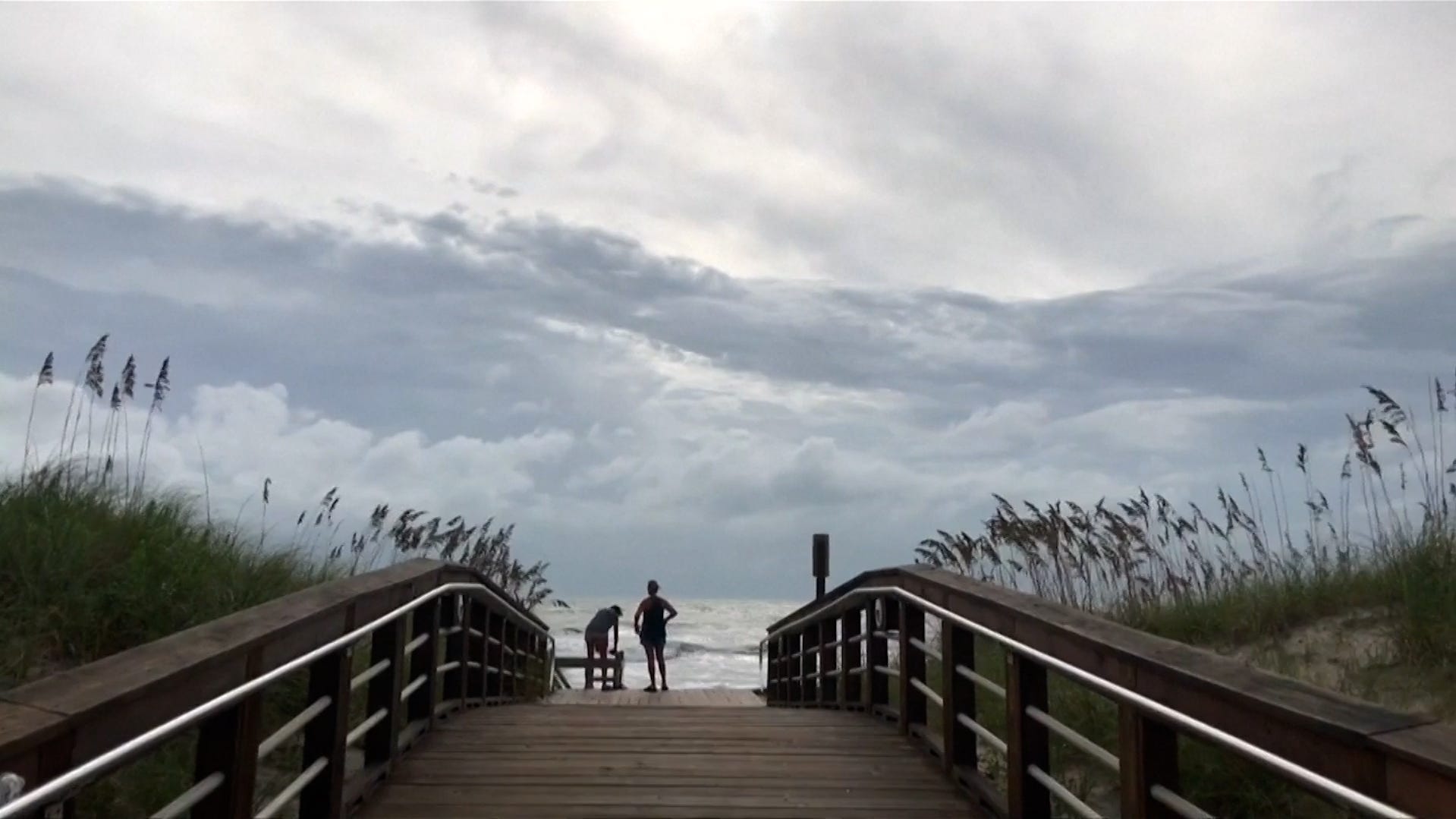A surprising tropical cyclone 'outbreak' closes out July in the Pacific
The typically unremarkable Central Pacific Hurricane Basin saw a surprising uptick in storms in late July. Both major Hurricane Iona and Tropical Storm Keli spun harmlessly far from land.

The typically unremarkable central Pacific hurricane basin saw a surprising uptick in storms in late July as both major Hurricane Iona and Tropical Storm Keli spun harmlessly far from land.
"The central Pacific Ocean is in the midst of an unusual tropical cyclone 'outbreak,' recording two concurrent named storms for the first time since 2015 and its first major (Category 3 or stronger) hurricane since Dora in August 2023," said WPLG-TV hurricane expert Michael Lowry in an e-mail on July 29.
Fortunately, Hurricane Iona has now (as of July 31) weakened to a tropical storm and Keli has dissipated. "Tropical Storm Iona, and the remnants of Keli, continue to track to the west, far south of the main Hawaiian Islands," the National Weather Service in Honolulu said July 31.
A third system, Tropical Storm Gil, is now spinning in the eastern Pacific basin. It poses no immediate threat to any land areas.
While the twin storms in the central Pacific is "unusual," it's still a far cry from the all-time records set in the Atlantic and eastern Pacific basins: According to the National Hurricane Center, there have been as many as five active Atlantic tropical cyclones at once, which occurred Sept. 10-12, 1971. In the eastern Pacific, on Aug. 26, 1974, there were five simultaneous named storms of at least tropical storm strength, Phil Klotzbach, a tropical scientist at Colorado State University, told weather.com.
What does the activity in the Pacific mean for the US?
While eastern Pacific tropical storms and hurricanes can affect the west coast of Mexico and their remnants occasionally affect the Southwest U.S. with drenching rain, central Pacific storms usually miss all land areas, though they can sometimes affect Hawaii.
Tropical cyclones in the Pacific and Atlantic, while similar storms, have slightly different "seasons," with the eastern Pacific season starting two weeks earlier. Additionally, the large-scale climate factors that go into a given season's level of activity are different: For example, if forecasters predict an active Atlantic season due to La Niña, the opposite prediction is usually made for the eastern Pacific, which tends to be more active during El Niño years.
As well, individual storms in each basin seldom interact directly since Central America acts as a barrier between the two basins. And while some storms can cross over between basins, usually their low-level circulation dissipates before making a complete crossover, the hurricane center said.
Furthermore, hurricanes very rarely cross over from the Pacific Ocean to the Atlantic basin, AccuWeather reports: most of the hurricanes that have crossed over, records show, have taken a path from the Atlantic basin to the Pacific basin.
In addition, both the central and eastern Pacific basins are separate from the Atlantic basin, which is the basin that we're most familiar with. All the basins have separate lists of names.
Iona was a major hurricane
The Central Pacific Hurricane Center said in a July 29 advisory that Hurricane Iona had strengthened into a major hurricane several hundred miles south of the Hawaiian Islands. At its peak, the storm had maximum sustained winds near 125 mph with higher gusts, making Iona a Category 3 hurricane on the Saffir-Simpson wind scale.
However, by July 31, Iona had weakened to a 50-mph tropical storm and continued to move west into the open Pacific Ocean, far from land. "There are no coastal watches or warnings in effect," the Central Pacific Hurricane Center said.
Where is the central Pacific hurricane basin?
The central Pacific basin encompasses all storms and hurricanes that form between 140° West Longitude and the International Date Line.
It's distinct from the more familiar eastern Pacific basin, with the dividing line being an invisible line in midst of the ocean (140°W).
Additionally, the National Hurricane Center handles naming for storms in the eastern Pacific, while the Central Pacific Hurricane Center handles naming for storms in the central Pacific.
Central Pacific basin is usually rather quiet
The central Pacific basin can see a wide range of activity depending on the year, according to Lowry. Generally, he said the basin observes its most active hurricane seasons during El Niño years like 2015, 2009, and 1997 when it recorded 16, 7, and 9 tropical cyclones respectively.
On average, the central Pacific sees only 4 to 5 tropical cyclones (tropical depression, storms, or hurricanes) each season and around three named storms (tropical storm or hurricanes), Lowry said.
NOAA predicted a less active central Pacific hurricane season in 2025, with a range of 1-4 tropical cyclones across the basin.
(This story has been updated with new information.)